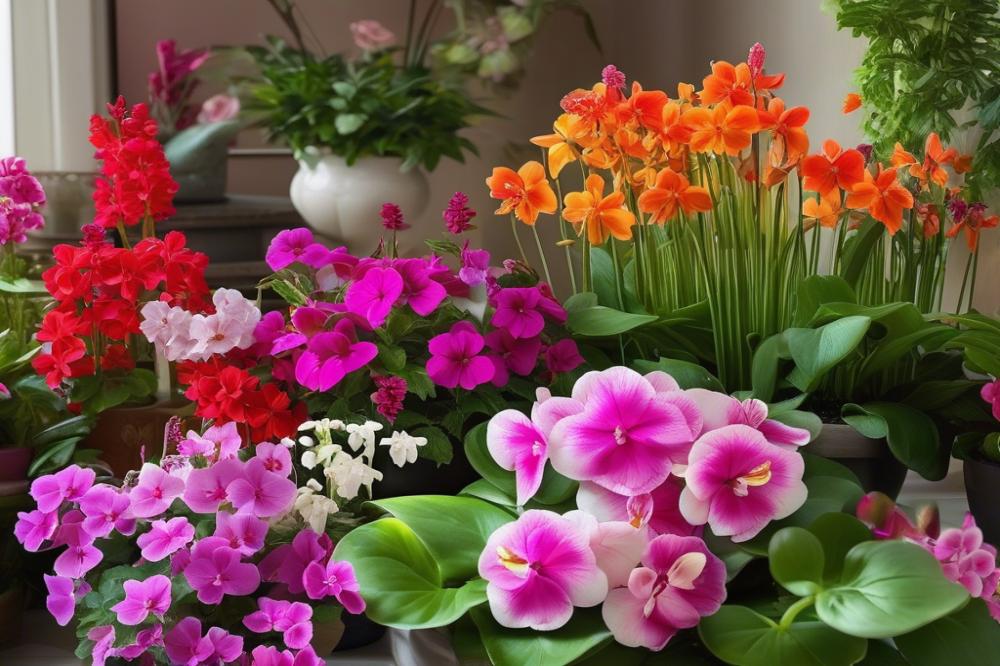Cherry Parfait Roses: A Beautiful Addition to Your Garden
Cherry Parfait Roses captivate garden enthusiasts with their stunning red and white blooms. These hybrid tea roses are not just visually appealing; they also bring a delightful fragrance to your outdoor space. However, growing roses requires more than just planting them in the ground. Understanding some key aspects of rose maintenance is essential to enjoy the beauty of these flowers for years to come.
Proper care is critical when cultivating any type of rose. From soil requirements to pest control and disease prevention, every factor plays a role in the plant’s vitality. Without adequate attention, even the most beautiful roses can suffer from various issues. Therefore, it’s important to know the basics of planting roses, watering roses, and choosing the right fertilizer for roses. Each detail contributes to the overall health and growth of the plants.
This article will guide you through the essential steps of growing and maintaining Cherry Parfait Roses. You’ll learn about pruning techniques that promote healthy growth and how to provide effective watering strategies. We will also explore soil conditions that are ideal for roses. Additionally, discussions on pest control and disease prevention will help you safeguard your flowers. Get ready to transform your garden into a vibrant display of color and beauty!
Understanding Cherry Parfait Roses

Cherry Parfait Roses captivate with their stunning blooms. Their petals display a lovely blend of bright pink and creamy white hues. This color pattern can create a delightful visual in any garden. As a hybrid tea rose, they stand out for more than just their appearance. These roses have a refined shape and exquisite fragrance, making them appealing to many gardeners.
Hybrid Tea Rose Classification
Being part of the hybrid tea rose family, these flowers are known for their large, high-centered blossoms. Their classification indicates a variety bred specifically for beauty and longevity. With the right care, they thrive and produce flowers continuously throughout the season. growing roses of this type can be rewarding, especially for those who enjoy gardening. The well-formed blooms are not only attractive but also make wonderful cut flowers.
Appeal and Uses in Gardens
These roses enhance any garden setting. Their vibrant colors and distinct form draw attention from visitors. Planting roses in groups can create a striking display. They also pair nicely with other plants, adding depth to landscaping. Using Cherry Parfait Roses as focal points can elevate the visual delight of your outdoor space.
Soil requirements for these roses are moderate. Aim for well-draining soil enriched with organic matter. Regular watering is vital, especially during dry spells. Each plant needs consistent moisture to flourish. Fertilizer for roses should be applied a few times each season for optimal growth. Balancing nutrients will promote healthy foliage and abundant blooms.
Pruning roses is another essential aspect of maintenance. Minimal yet strategic cuts will encourage new growth and improve airflow. Strong plants are less prone to pest control challenges and diseases. Monitoring for pests and taking quick action helps keep the plants healthy. Disease prevention measures can include selecting disease-resistant varieties whenever possible.
In summary, Cherry Parfait Roses are not just a treat for the eyes. They add charm, fragrance, and a touch of elegance to gardens. By understanding how to properly care for them, anyone can enjoy their beauty year after year.
Soil Requirements for Cherry Parfait Roses

Quality soil is essential for anyone serious about growing roses. Without the right foundation, these stunning flowers may struggle to thrive. The mixture of nutrients, pH levels, and drainage affects everything from blooming to overall health.
Ideal Soil Conditions
The pH level should ideally range between 6.0 and 6.8. This slightly acidic environment allows roses to absorb nutrients effectively. Also, the texture of the soil matters. A combination of loamy soil that contains clay, silt, and sand will provide the best balance. It should not be too dense or too porous.
Good drainage is vital for tree-like blooms. Waterlogged soil can lead to root rot, harming your plants significantly. Therefore, it’s best to plant roses in raised beds or mounds if the ground is heavy with clay.
Soil Amendments and Preparation Techniques
Preparing the soil for planting roses involves several steps. First, test your soil to determine its pH level and nutrient content. Many local gardening centers offer easy soil testing kits. Depending on the results, you might need to add amendments. Organic compost can enhance nutrient levels and improve soil structure.
Incorporating well-rotted manure ensures the soil remains rich in organic matter. This is a simple way to boost rose maintenance. Adding peat moss or perlite aids in improving drainage. Mixing in these materials helps create a balanced environment for the roots.
Before planting, till the soil to break up clumps. This encourages healthy roots to spread and access nutrients. When preparing your site, clear away any weeds or debris. A clean area prevents competition for resources.
Consider using mulch around your plants after planting. It helps in retaining moisture while also suppressing weeds. Regularly monitor your soil conditions as you grow your roses. Adapting your approach ensures your Cherry Parfait variety blossoms beautifully!
Planting Cherry Parfait Roses

Best Time to Plant
The ideal time for planting is in early spring or fall. Picking a day when the temperature is mild will help. This timing provides the best chance for strong root development. Additionally, soil temperature should be warm enough to support growth. Late March to early May works well for many gardeners.
Choosing the Right Location for Optimal Sunlight
Finding the right location is crucial for success. Hybrid tea roses thrive in full sunlight, requiring at least six hours of direct sun each day. Prioritize areas that receive consistent light throughout the day. Avoid spots with heavy shade from trees or buildings. Well-drained locations also help prevent waterlogging. Poor drainage can lead to root rot, affecting overall health.
Step-by-Step Planting Guide
Begin by preparing the soil. Cherry Parfait roses benefit from loamy, well-draining soil. Mix in compost to enhance nutrients and improve drainage. Next, dig a hole that is twice the size of the root ball. Placing the root ball in the center is important for uniform growth. Backfill the hole with soil, making sure to eliminate air pockets.
Watering roses right after planting is vital. This helps the roots settle into their new home. Applying mulch around the base retains moisture and suppresses weeds. Fertilizer for roses can be introduced after a few weeks. Use a balanced mix to promote healthy growth.
Regularly monitor for pests and diseases. Early detection simplifies pest control and disease prevention. Annual pruning roses in late winter supports new growth and keeps your plant healthy. Maintaining proper care will yield beautiful blooms with vibrant colors.
Watering Cherry Parfait Roses

Watering Frequency and Amount
Watering is a crucial part of growing roses. The frequency will depend on your climate. Generally, water deeply once or twice a week. During hotter months, increase the frequency. Using about 1 to 2 inches per week is ideal for optimal growth. Don’t let the soil dry completely between waterings, as this can stress your plants.
Best Practices for Effective Watering
Applying water at the base of the plant is better than soaking the foliage. Focus on the root zone where moisture is needed most. Early morning is the best time to water. Doing so minimizes evaporation. Consider using a soaker hose or drip irrigation for efficiency. These methods allow water to seep slowly into the soil. This technique supports the soil requirements for healthy root systems.
Signs of Overwatering or Underwatering
Recognizing the signs of poor watering is vital for rose maintenance. Wilted leaves that droop may indicate underwatering. On the flip side, yellowing leaves or root rot can signal overwatering. Ensure the soil is moist but not soggy. Checking the top couple of inches of soil can help you gauge moisture levels. A well-draining mix is essential for thriving hybrid tea roses. If you notice standing water, adjust your watering schedule accordingly.
Providing the right amount of water will help your plants flourish. Balance is key. With careful attention, keeping your roses healthy will be easier.
Fertilizing Cherry Parfait Roses
Fertilization plays a vital role in growing roses. Healthy plants require proper nutrients to flourish. Without adequate feeding, growth can stall and blooms may be fewer. Regular fertilizing helps to maintain vibrant colors and robust growth. It’s essential for overall rose maintenance.
When considering fertilizers for roses, choose one that is formulated specifically for flowering plants. A balanced fertilizer, like a 10-10-10 NPK formula, works well. Alternatively, a slow-release type provides nutrients over an extended period. Organic options, such as compost or well-rotted manure, also enrich the soil naturally. Both methods promote healthy development in hybrid tea roses.
Timing and Application Methods
Timing is crucial for effective fertilizing. Start feeding in spring when new growth appears. This supports the plant during its active growing period. Follow-up applications every four to six weeks can help maintain that momentum. Always water roses after applying fertilizer to prevent root burn.
Application methods can vary. Granular fertilizers can be sprinkled around the base of the plant. It’s important to avoid direct contact with stems. For liquid fertilizers, dilute according to package instructions and apply directly to the soil. Mixing fertilizer with water ensures even distribution and eases absorption.
For the best results, adhere to soil requirements. Ensure that the soil drains well yet retains some moisture. In addition, remember that healthy plants are more resilient against pests and diseases. Regularly pruning roses can also encourage better nutrient uptake, making fertilization even more effective.
Pruning Cherry Parfait Roses
Benefits of Pruning Roses
Pruning roses is vital for their overall health. It encourages new growth and improves air circulation. Healthy plants produce more vibrant blooms. Moreover, a well-pruned rose bush can withstand pests and diseases better. Regular trimming helps manage the plant’s shape as well. By removing dead or damaged wood, you create space for more fruitful branches to thrive.
When and How to Prune Cherry Parfait Roses
Timing is key when pruning roses. Early spring, just before growth starts, is ideal. Look for swelling buds to know when to begin. Start by removing any dead or weak stems. Focus on the center of the bush, removing branches that cross each other. This opens up the center and allows light to penetrate. Shape the bush by cutting back about one-third of last year’s growth. It’s essential not to cut too much at once; a little pruning can go a long way.
Tools and Techniques for Successful Pruning
Using the right tools makes a big difference. Sharp pruning shears help make clean cuts. Loppers work well for thicker branches. Remember to disinfect your tools before using them to prevent disease spread. Always wear gloves to protect your hands from thorns. Technique matters, too. Make cuts at a 45-degree angle just above an outward-facing bud. This encourages growth away from the center. Additionally, regular maintenance, like fertilization and watering roses, supports recovery after pruning. Keep an eye out for any diseases while you work. Pruning is important, but comprehensive rose maintenance is crucial for success.
Maintaining Cherry Parfait Roses
Regular maintenance tasks play a crucial role in the health of your blooms. These roses thrive with consistent care. Start by assessing watering needs. Watching the soil is essential; it should remain moist but not waterlogged. Too little water can stress the plants, while overwatering leads to root rot. Consider your local climate to determine how much to provide. Rainfall and temperature will sway your routine.
Mulching Techniques and Benefits
Mulching is an effective method to conserve moisture and suppress weeds. A layer of organic mulch helps maintain soil temperature, which is vital for strong root development. Use materials like wood chips, straw, or shredded leaves. Aim for a thickness of around two to three inches. This barrier not only retains moisture but also adds nutrients as it breaks down. Additionally, it creates a tidy appearance. Your garden will look inviting while your roses receive the nourishment they need.
Deadheading and Encouraging Bloom Production
Deadheading is an important task for promoting fresh blooms. Remove spent flowers promptly by cutting them back to the first set of leaves. This practice encourages the plant to focus energy on new growth. Regularly checking for wilted flowers helps maintain visual appeal. Consider also the timing of your actions. Pruning roses correctly can make a significant difference in the blooming cycle. Adjusting how and when you deadhead can lead to an abundance of blossoms throughout the growing season.
Pest control should be on your radar as well. Monitor your plants regularly for signs of insects or disease. Early detection can prevent larger issues later on. Disease prevention practices involve ensuring good air circulation around your roses. This can be achieved through proper spacing during planting. Fertilizer for roses can be beneficial but should be used wisely. A balanced fertilizer can supplement nutrients, improving overall health. Every small effort adds up, leading to a flourishing display of color in your garden.
Soil requirements also play a vital role in maintenance. Testing soil pH can guide you in amendments. Roses prefer slightly acidic to neutral soils. Improper pH levels can hinder growth. Choose high-quality soil for your plants at the time of planting. This creates a strong foundation for healthy development. Following these steps will lead to thriving hybrid tea roses, showcasing their beauty throughout the season.
Pest Control and Disease Prevention
Common Pests Affecting Cherry Parfait Roses
Many pests can invade your beautiful flowers. Aphids are tiny insects that suck the juices from the leaves. Spider mites are another concern, especially in dry conditions. These pests can weaken the plant, making it vulnerable. Besides these, thrips may damage the petals, causing discoloration. Lastly, whiteflies hide on the undersides of leaves and can create major issues if not caught early.
Recommended Pest Control Strategies
Taking action against pests is crucial for healthy rose growth. Start by checking your plants regularly. Early detection helps in managing infestations more easily. For small outbreaks, a strong stream of water can remove many pests without chemicals. If you prefer a more potent approach, consider insecticidal soap. This product targets soft-bodied insects effectively, protecting your roses. Organic methods should always be prioritized for those who want to reduce chemical use. Some gardeners find introducing ladybugs a great way to control aphids naturally. Ultimately, consistency in monitoring and treating your plants will lead to thriving roses.
Identifying and Preventing Diseases
Fungal infections are common dangers to roses. Black spot is one of the most prevalent diseases, leading to yellowing leaves and dropping foliage. Recognizing these early signs is key to preserving plant health. Powdery mildew can also appear, presenting as a white, dusty coating on leaves. Proper air circulation and spacing during planting roses can help prevent these issues. Crop rotation and careful watering habits are effective strategies for disease prevention. Avoid watering leaves directly, as moisture can encourage fungal growth. Taking the time to prune roses in the spring also promotes better plant health. Regular maintenance and proper soil conditions will create a strong foundation for your plants to flourish.
Wrap-Up on Caring for Cherry Parfait Roses
Caring for these beautiful blooms is an engaging and rewarding experience. Remember to place them in a spot with plenty of sunshine. Watering them deeply, but not too frequently, helps maintain their health. Regular feeding with rose fertilizer will encourage strong growth and vibrant colors. Pay attention to pruning, as it promotes bushiness and encourages more flowers. These simple steps can make a significant difference in your gardening journey.
Taking time to enjoy the beauty these flowers bring can be truly fulfilling. Watching them flourish and bloom adds joy and grace to any garden. Share your love for growing roses with friends and family. Whether you admire them from a distance or bring them inside, their charm can brighten any space. Cultivating Cherry Parfait Roses is not just a task; it’s a delightful experience.
As with all gardening endeavors, rose maintenance may come with challenges. Handling pests and diseases can be both frustrating and rewarding. However, the satisfaction of nurturing these plants to their best is worth every effort. Connecting with nature through gardening nurtures both plants and spirits. So, embrace the process and enjoy the unfolding beauty. Cherish each moment spent in your garden, and revel in the success that comes with your dedication. Happy gardening!



